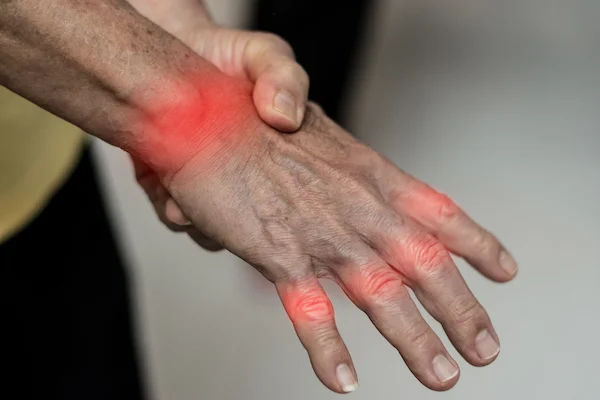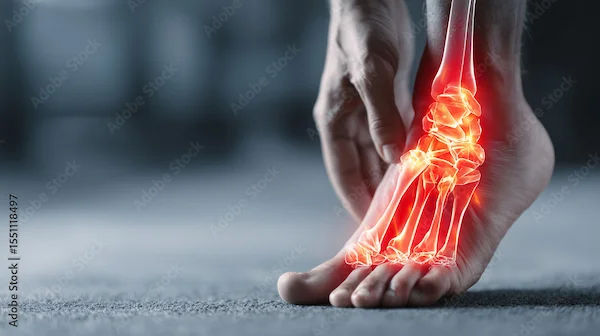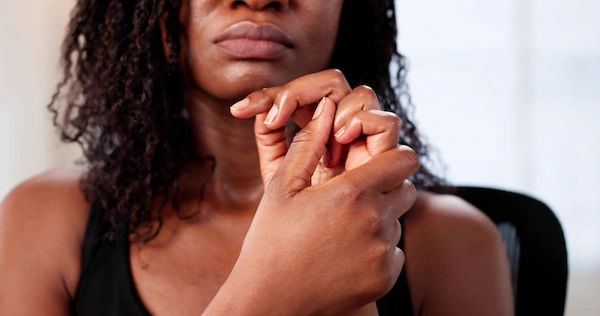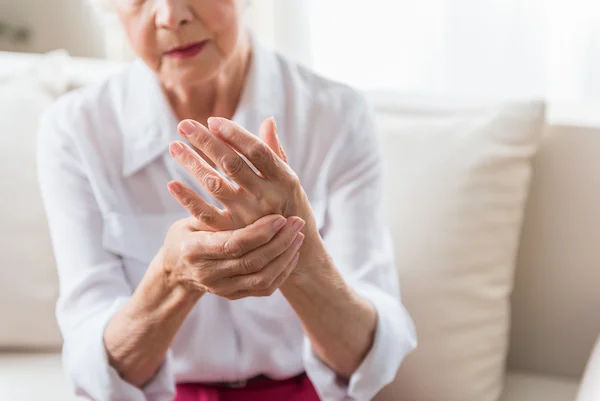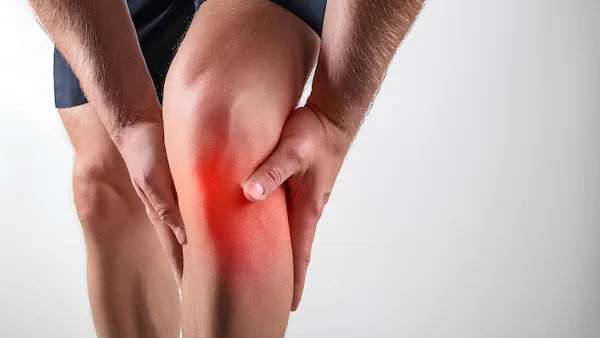Guide to Tips To Manage Arthritis In Old Age
Learn effective ways to manage arthritis in old age through targeted exercises, pain-relief options, anti-inflammatory diets, and home modifications. Discover how seniors can stay active, reduce stiffness, and maintain independence with proper arthritis care.

Written by Dr. M L Ezhilarasan
Reviewed by Dr. Rohinipriyanka Pondugula MBBS
Last updated on 21st Oct, 2025
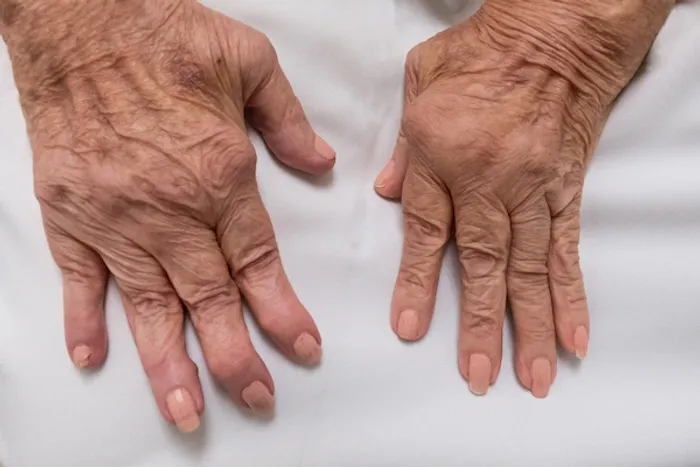
Introduction
Arthritis is not just “wear and tear”; it's a group of joint conditions that can affect how you move, sleep, and enjoy life. In old age, arthritis is especially common, but that doesn’t mean living with constant pain or giving up activities you love. With the right mix of movement, nutrition, pain-relief strategies, and smart support at home, most older adults can reduce symptoms, protect their joints, and stay independent. In this guide, we’ll break down practical, evidence-based tips to manage arthritis in old age, from exercises tailored for seniors to medication safety, home modifications, sleep improvements, and when to consider injections or surgery. You’ll learn how to build an arthritis action plan, avoid common mistakes, and use proven tools like topical NSAIDs, tai chi, and joint-friendly footwear. If symptoms persist beyond two weeks or your condition is limiting daily life, consult a doctor online with Apollo24|7 for personalised evaluation and treatment options. Let’s get you moving more comfortably—with less pain and more control.
Understanding Arthritis in Old Age
The arthritis types include:
Types you’ll see in seniors
- Osteoarthritis (OA): The most common form in old age, OA involves thinning cartilage, bony growths (osteophytes), and joint inflammation leading to pain, stiffness, and reduced function, often in knees, hips, hands, and spine. [4,5,11]
- Rheumatoid arthritis (RA): An autoimmune arthritis that can start earlier but persists into old age. It presents with prolonged morning stiffness, swollen/tender joints symmetrically (hands/wrists/feet), and systemic symptoms; early treatment prevents damage. [5]
- Gout and CPPD (pseudogout): Crystal arthropathies that cause sudden flares with red, hot, swollen joints—often the big toe (gout) or knee/wrist (CPPD). Diet, diuretics, kidney disease, and dehydration influence risk. [10]
- Others: Polymyalgia rheumatica, psoriatic arthritis—less common but important, especially with systemic symptoms.
Consult a Top Rheumatologist for Personalised Advice
How ageing changes joints, muscles, and pain signals
The signs and conditions include:
- Cartilage repair slows, and cumulative micro-injury accumulates.
- Muscles weaken (sarcopenia), reducing shock absorption and joint stability; even a small
- strength gain reduces knee loads.
- Pain pathways become more sensitive (central sensitisation), making sleep, mood, and stress management crucial.
- Vision, balance, and reaction time decline, elevating fall risk—key in arthritis management for older adults.
Red flags and when to seek care
See a clinician promptly if you have:
- Sudden hot, red, severely painful joint (possible gout/infection).
- Morning stiffness lasting more than 45–60 minutes (possible RA).
- Rapidly worsening pain, locking/giving way of a joint, fever, unexplained weight loss, or new weakness/numbness.
If symptoms persist beyond two weeks or disrupt daily activities, consult a doctor online with Apollo24|7 for further evaluation and a personalized plan.
Diagnosing Arthritis in Seniors
The diagnosis includes:
Clinical signs and what doctors look for
- OA: Activity-related pain, short (<30 min) morning stiffness, crepitus, bony enlargement at finger joints, reduced range of motion.
- RA: Prolonged morning stiffness, symmetrical small joint swelling, fatigue, and elevated inflammatory markers.
- Gout/CPPD: Acute monoarthritis with erythema/warmth; aspiration can identify crystals.
- Clinicians also screen for function (stairs, transfers), gait, and risk factors (obesity, diabetes, previous injury).
Imaging and labs; when tests help
- X‑rays: Show joint space narrowing, osteophytes—useful for OA severity but not always correlated with pain. [11]
- Ultrasound/MRI: Helpful for soft tissue, synovitis, or unclear cases.
- Labs: ESR/CRP, rheumatoid factor, anti‑CCP for suspected RA; serum uric acid for gout; joint aspiration for crystals or infection. Vitamin D can be checked if deficiency is suspected (bone pain, fractures).
Apollo24|7 offers convenient home collection for tests like vitamin D, HbA1c, or lipid profile, which can influence joint health and surgical risk.
Telehealth and home test options
- Review symptoms, visible swelling, and medication safety by video.
- Use patient‑reported tools (e.g., WOMAC for knee/hip OA) to track progress.
- Teleconsult with Apollo24|7 to adjust treatments and order home-based labs or imaging referrals when needed.
Movement and Exercise Essentials
Movements and exercises are essential; these basically include:
Four pillars: strength, aerobic, flexibility, balance
- Strength training: 2–3 days/week targeting quadriceps, glutes, calves, core, and hands. Chair squats, sit‑to‑stands, wall push‑ups, resistance bands. Stronger muscles reduce joint load and pain.
- Aerobic: 150 minutes/week of low‑impact activity (walking, cycling, swimming) or as tolerated; even 10-minute bouts add up. Improves pain, mood, and heart health.
- Flexibility: Gentle daily range-of-motion for hips, knees, ankles, hands, and spine; improves stiffness and function.
- Balance: 2–3 times/week (tandem stance, heel‑to‑toe, tai chi) to prevent falls.
A simple 7‑day plan for older adults (adjust to your tolerance)
- Mon: 20–30 min brisk walk + sit‑to‑stands (2×8–12) + calf stretch.
- Tue: Tai chi (20 min) + band rows and biceps curls (2×10–12).
- Wed: Rest or 15 min stationary bike + hamstring stretch.
- Thu: Aquatic aerobics (30 min) + wall push‑ups (2×10–12).
- Fri: 20–30 min walk + mini‑squats holding a countertop (2×8–12) + quad stretch.
- Sat: Gentle yoga (20 min) + heel raises (2×12) + balance practice.
- Sun: Rest or leisurely swim.
Tip: Use the “talk test” to keep intensity moderate; pain may rise slightly during exercise but should settle within 24 hours. If pain spikes or swelling increases, reduce intensity or consult a clinician. This plan targets long-tail needs like “joint-friendly workouts for older adults” and “osteoarthritis knee exercises for the elderly.”
What the evidence says
The evidence includes:
- Exercise is a first‑line therapy across guidelines, with consistent benefits for pain and function.
- Tai chi improves pain and function in knee OA and is comparable to physical therapy in some trials.
- Aquatic exercise benefits those with severe pain or mobility limitations and reduces joint loading.
Weight, Diet, and Anti‑Inflammatory Eating
Why does even 5–10% weight loss help knee/hip OA
Excess weight increases joint load additional kilogram adds roughly 4 kg of force across the knee during activity. Clinical trials show that losing 10% of body weight significantly improves knee pain and function; greater losses (15–20%) confer larger benefits.
- In the IDEA trial, diet + exercise outperformed exercise alone for pain reduction and function in adults with knee OA.
- Even a 5% loss can help; the key is steady, sustainable habits.
Arthritis‑friendly meals and simple swaps
The arthritis friendly meals and tips include:
- Pattern: Mediterranean-style eating (vegetables, fruits, legumes, whole grains, fish, olive oil, nuts) supports weight control and may dampen inflammation. [9]
- Protein with purpose: Include lean proteins (fish, poultry, beans) to preserve muscle mass in older adults.
- Simple swaps: Replace refined carbs with whole grains; choose olive oil over butter; add fatty fish 2x/week; snack on nuts instead of chips.
- Hydration: Dehydration can worsen fatigue and cramps, and may precipitate gout flares.
Supplements: what’s worth trying (and what’s not)
- Omega‑3 (fish oil): Modest benefit in inflammatory arthritis; mixed but plausible benefit for OA pain. Generally safe, but discuss if on blood thinners.
- Turmeric/curcumin: Small trials suggest mild pain relief; choose standardised products and monitor interactions.
- Glucosamine/chondroitin: Mixed evidence; some report symptom relief, others show no difference versus placebo. Consider a 2–3 month trial; stop if no benefit.
- Vitamin D: Routine supplementation doesn’t reduce OA pain when levels are normal; correct deficiency for bone health.
If you have diabetes or metabolic syndrome, checking HbA1c and triglycerides can guide your weight-loss approach. Apollo24|7 offers home collection for these tests.
Pain Relief Options: From Home Remedies to Medications
The range of options for pain relief includes:
Heat/cold, topical NSAIDs, capsaicin
- Heat (warm packs/showers) relaxes muscles and eases stiffness greatly before activity.
- Cold (ice packs) reduces swelling after activity or during flares.
- Topical NSAIDs (e.g., diclofenac gel) are strongly recommended for knee/hand OA; they offer pain relief with much lower systemic exposure than oral NSAIDs—important in older adults.
- Capsaicin cream/gel can help hand/knee OA; it may sting initially, but the effect builds over weeks.
Pills in older adults: safety basics
- Acetaminophen (paracetamol): Modest pain relief; safer for many, but watch total daily dose (max 3,000 mg in many older adults; confirm with your doctor).
- Oral NSAIDs (e.g., ibuprofen, naproxen): Effective but carry risks—stomach bleeding, kidney strain, and cardiovascular events. If used, use the lowest effective dose for the shortest time; consider a PPI for stomach protection, especially if over 65 or on aspirin/blood thinners.
- Duloxetine: Can help chronic musculoskeletal pain and co‑existing mood symptoms.
- Opioids: Generally avoided for chronic arthritis due to risk; reserve for select cases with careful monitoring.
Injections and what to expect
- Corticosteroid injections can provide short‑term relief (weeks to a few months), especially for knee or hip OA flares; frequency should be limited.
- Hyaluronic acid injections: Evidence is mixed; many guidelines recommend against routine use due to small average benefits and cost.
- If pain persists or your medication options are limited by side effects, consult a doctor online with Apollo24|7 to personalise safer pain plans.
Supportive Devices and Home Safety
The supportive devices and home safety include:
Braces, canes, footwear, and grips
- Knee braces: Unloader or neoprene braces can reduce pain in knee OA and improve stability.
- Canes/walking sticks: Held in the opposite hand to the affected knee/hip; can reduce joint load by up to 20%. Ask a PT to set the correct height.]
- Footwear/insoles: Supportive, rocker‑bottom shoes and cushioned insoles can reduce pain during walking in knee and foot OA. Avoid high heels.
- Hand aids: Jar openers, key turners, large‑grip utensils, and lever taps protect small joints in hand arthritis.
Fall‑proofing your home: room‑by‑room
- Entryways: Remove loose rugs; install a grab bar step rail; ensure good lighting.
- Bathroom: Non‑slip mats, grab bars by toilet and shower; raised toilet seat; handheld shower.
- Bedroom: Bed at knee height; a firm mattress topper; night lights.
- Living areas: Chairs with armrests; items within easy reach; cord management.
- Kitchen: Store heavy items at waist height; use a rolling cart; electric can openers.
Sleep, Mood, and Coping Skills
The influence of sleep, mood and coping skills is:
Sleep routines that calm pain
- Keep a consistent sleep/wake schedule; expose yourself to morning light; keep naps under 30 minutes.
- Evening wind‑down: 30–60 minutes without screens; gentle stretches + warm shower to ease stiffness.Pain positioning: Knee pillow for side sleepers; small towel roll under neck; heat for 10 minutes before bed.
- If pain wakes you, try 5–10 minutes of diaphragmatic breathing; use a pre‑set ice/heat pack rather than pacing around.
Managing stress, anxiety, and low mood
- Chronic pain and mood are tightly linked; cognitive behavioral therapy (CBT) and mindfulness can reduce pain intensity and improve coping.
- Gentle mind‑body options: Tai chi and yoga combine balance, flexibility, and relaxation, especially effective for older adults.
- If low mood, anxiety, or insomnia persist, consult a clinician. Apollo24|7 can connect you with mental health support and sleep specialists who understand arthritis.
Flare Management and Self‑Monitoring
The management and monitoring include:
Spotting a flare vs. everyday stiffness
- OA: Flares often follow unaccustomed activity; pain is localised, with temporary swelling/warmth.
- RA/gout: Flares bring pronounced swelling, warmth, and longer morning stiffness; gout may appear suddenly overnight in one joint.
- Track patterns: Weather, sleep loss, new activity, or stress can trigger flares for some.
Your 48‑hour flare plan
Step 1: Reduce load—short walks, avoid high stairs; use a cane if needed.
Step 2: Ice 10–15 min, 2–3 times/day for hot joints; heat for muscle spasm.
Step 3: Topical NSAID 3–4 times/day; consider acetaminophen as needed.
Step 4: Gentle mobility (pain‑free range) 2–3 times/day; avoid aggressive stretching.
Step 5: Elevate the limb, compress with an elastic wrap if swelling (not too tight).
Step 6: Reassess at 48 hours; if not improving—or if you suspect gout/RA—consult a clinician. If your condition does not improve after trying these methods, book a physical visit to a doctor with Apollo24|7.
Advanced Treatments and Surgery
When to consider surgery
- Consider joint replacement (hip/knee) when pain severely limits walking, self‑care, or sleep despite optimized non‑surgical care. Imaging that matches severe symptoms supports the decision.
- Outcomes in older adults are generally good; age alone is not a contraindication, but overall health matters.
Preparing for recovery at any age
Prehab: 4–6 weeks of strength and aerobic conditioning improves post‑op recovery.
Optimize health: Stop smoking, manage blood pressure, diabetes (HbA1c), and weight; address anemia, vitamin D deficiency, and dental issues.
Plan your home: Raised toilet seat, walker/cane, cleared walkways, help for meals/shopping.
Discuss surgical options and pre‑op optimisation with your doctor. Apollo24|7 can facilitate referrals and pre‑op lab packages with home collection.
Living Well and Staying Connected
Living well involves:
Caregivers, support groups, and telehealth
- Involve caregivers in exercise and safety plans; share your pain ladder and flare plan.
- Join arthritis support groups (online/offline) to stay motivated and exchange tips. [3]
- Telemedicine keeps care consistent during flares or travel; share your pain/function scores.
Building a sustainable daily routine
- Anchor habits: Pair exercises with daily cues (after breakfast, during TV).
- Pacing: Use the “20–2–20 rule”—every 20 minutes of sitting, do 2 minutes of movement to reduce stiffness and keep joints lubricated.
- Celebrate small wins: track “good days” and note what made them better.
Conclusion
Arthritis in old age is common, but feeling stuck with daily pain is not inevitable. The strongest evidence—from leading guidelines and clinical trials—points to a foundation of movement, weight management, and practical self‑care, supported by thoughtfully chosen pain treatments and everyday tools that make life easier. Start with what you can control today: a short walk, some sit‑to‑stands, a switch to supportive shoes, a warm shower before bed, or a simple kitchen modification that saves your hands. Use a written pain ladder and flare plan to stay calm and consistent when symptoms spike. And remember that mood and sleep are levers, not afterthoughts; improvements there often translate to better pain days. When you need extra help, don’t wait. If symptoms persist beyond two weeks or your routine isn’t working, consult a doctor online with Apollo24|7 for a personalised plan.
Consult a Top Rheumatologist for Personalised Advice
Consult a Top Rheumatologist for Personalised Advice

Dr. Anand Ravi
General Physician
2 Years • MBBS
Bengaluru
PRESTIGE SHANTHINIKETAN - SOCIETY CLINIC, Bengaluru
Dr Ankit Patowari
Rheumatologist
6 Years • MBBS, MD MEDICINE, DM RHEUMATOLOGY
Guwahati
Apollo Clinic Guwahati, Assam, Guwahati

Dr. Zulkarnain
General Physician
2 Years • MBBS, PGDM, FFM
Bengaluru
PRESTIGE SHANTHINIKETAN - SOCIETY CLINIC, Bengaluru

Dr. Ramineni Naga Tejaswini
Rheumatologist
3 Years • MBBS, DNB(Internal Medicine), DrNB ( Clinical Immunology and Rheumatology)
Hyderabad
Apollo Hospitals Jubilee Hills Hyderabad, Hyderabad

Dr. V Krishnamurthy
Rheumatologist
34 Years • MD, DM (Rheum) FRCP
Chennai
Apollo Hospitals Cancer Centre Nandanam, Chennai
Consult a Top Rheumatologist for Personalised Advice

Dr. Anand Ravi
General Physician
2 Years • MBBS
Bengaluru
PRESTIGE SHANTHINIKETAN - SOCIETY CLINIC, Bengaluru
Dr Ankit Patowari
Rheumatologist
6 Years • MBBS, MD MEDICINE, DM RHEUMATOLOGY
Guwahati
Apollo Clinic Guwahati, Assam, Guwahati

Dr. Zulkarnain
General Physician
2 Years • MBBS, PGDM, FFM
Bengaluru
PRESTIGE SHANTHINIKETAN - SOCIETY CLINIC, Bengaluru

Dr. Ramineni Naga Tejaswini
Rheumatologist
3 Years • MBBS, DNB(Internal Medicine), DrNB ( Clinical Immunology and Rheumatology)
Hyderabad
Apollo Hospitals Jubilee Hills Hyderabad, Hyderabad

Dr. V Krishnamurthy
Rheumatologist
34 Years • MD, DM (Rheum) FRCP
Chennai
Apollo Hospitals Cancer Centre Nandanam, Chennai
More articles from Arthritis
Frequently Asked Questions
What is the best exercise for arthritis pain relief for seniors?
The best exercise is the one you can do consistently: a mix of walking or cycling (aerobic), light strength training, gentle flexibility work, and balance (e.g., tai chi). Start small and build up. “Osteoarthritis knee exercises for the elderly” routines from a PT are ideal.
Should I use heat or cold for arthritis pain?
Use heat to relax stiffness before activity and cold to calm swelling or flares afterwards. Many seniors benefit from heat in the morning and brief icing post‑exercise.
Are topical NSAIDs safe for older adults with osteoarthritis?
Yes, topical NSAIDs (like diclofenac gel) are strongly recommended for knee/hand OA; they offer pain relief with less systemic risk than pills—particularly useful in old age.
Can diet really help arthritis in old age?
Yes. Even 5–10% weight loss can reduce knee/hip OA pain. A Mediterranean‑style, anti‑inflammatory diet supports weight and may reduce symptoms. Ask about omega‑3 or turmeric if interested.
When should I see a doctor for arthritis?
If pain persists beyond two weeks, limits your daily activities, or you have red flags (hot, swollen joint; fever; prolonged morning stiffness), see a professional. If symptoms persist beyond two weeks, consult a doctor online with Apollo24|7 for further evaluation.
